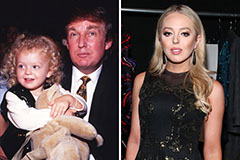5 Easy Facts About The Diamond Box Described
Table of ContentsThe Ultimate Guide To The Diamond BoxThe Definitive Guide for The Diamond BoxThe Greatest Guide To The Diamond BoxThe Diamond Box Things To Know Before You BuyThe Diamond Box for Beginners
According to an RJC auditor, suppliers only require to promise that they perform solid human legal rights due diligence, however do not provide any kind of proof for this. Neither does the Code of Practices need jewelersor other downstream companiesto have traceability or chain of safekeeping of their gold or diamonds. The Code of Practices is also weak in various other substantive locations, for instance, on indigenous individuals' rights and on resettlement.For instance, in March 2017, the RJC had 342 members that had not (yet) completed the audit procedure that certifies compliance with the Code of Practices. In enhancement, firms can sign up with at any kind of level of their procedures. A tiny subsidiary workplace of a large fashion jewelry firm can apply for RJC membership, without consisting of the rest of the company's entities.
The Code of Practices does not need business to publicly report on the concrete steps they have actually taken to perform due diligencea core requirement of the OECD Guidance (diamond earrings). Its reporting responsibilities are vague and do not point out due diligence or the demand for firms to report on the steps they have taken to determine, assess, and mitigate risks in their supply chains
How The Diamond Box can Save You Time, Stress, and Money.
A second RJC standard, the Chain-of-Custody Criterion, advertises traceability and is much more strenuous, yet adherence to it is optional for RJC participants. By early 2018, only 48 of over 1,000 participant companies had actually accredited entities under the standard, consisting of 13 jewelry experts. The Chain-of-Custody Criterion needs firms to establish docudrama proof of company purchases along the supply chain and to verify they are not causing adverse influences in conflict-affected and high-risk locations.
Rather, business are allowed to pick some "entities" under their control for certification, leaving other entities of a business uncertified. While this may permit companies to gradually switch to even more accountable sourcing methods, the existing practice additionally brings the risk that an entire firm delights in the reputational benefit when most of operations is not in conformity with the criterion.
All RJC member firms have to undertake an audit to show that they are compliant with the Code of Practices, and to obtain certification. Those companies that select to get qualification for the Chain-of-Custody Requirement have to undertake a different audit. Audits are based largely on a review of the company's composed policies and documentation, and check outs to a "representative set" of centers.
The smart Trick of The Diamond Box That Nobody is Talking About

Although audits are meant to consist of questions on a wide range of civils rights, auditors are not always qualified human civil liberties experts. Once the auditors complete their report, they just send a summary report of the audit to the RJC, not the complete audit record, which is shared just with the firm
While labor misuses prevail in the industry, artisanal mines give income for millions of employees and countless mining communities. Civil rights Watch thinks that the fashion jewelry industry should make every effort to guarantee that their efforts to mitigate supply chain human rights risks do not lead them to simply leave out all artisanal vendors from their supply chains as the "path of the very least resistance." Rather, they should support efforts to formalize and professionalize artisanal mines and enhance functioning problems.
The OECD Due Diligence Guidance recognizes this and is promoting cost-sharing within the industry. By doing this, all firms along the supply chain share read the monetary problem. A variety of efforts have arised that can assist jewelers trace their gold and rubies to mines of origin, and more responsibly source from the artisanal sector.
The Ultimate Guide To The Diamond Box

(https://www.magcloud.com/user/tdiamondboxza)
2 standardscertify artisanal and small-scale gold mines that adapt to human rights, labor civil liberties, and environmental standardsthe Fairmined Criterion and the Fairtrade Gold Requirement (Tissot Watches). Depending on the customer's permit with Fairmined, the gold may be fully deducible to the mine of origin, or might be blended with various other gold.
This amount is simply a little portion of the gold used every year by several of the companies examined in this report. Since early 2018, eight mines in four countries (Bolivia, Colombia, Mongolia, and Peru) were licensed, with an additional 20 mining companies working in the direction of accreditation. The Fairmined Gold Criterion is presently creating a new "market entrance" criterion that looks for to aid artisanal golden goose at the same time in the direction of complete accreditation.
9 Simple Techniques For The Diamond Box

 Neve Campbell Then & Now!
Neve Campbell Then & Now! Shaun Weiss Then & Now!
Shaun Weiss Then & Now! Ben Savage Then & Now!
Ben Savage Then & Now! Tiffany Trump Then & Now!
Tiffany Trump Then & Now! Bo Derek Then & Now!
Bo Derek Then & Now!